Tank Vasculant
Click here to see more details about Tank Vasculant in the video.
The History and Appeal of Tank Vasculant
Cartier has famous models such as the Tank and Santos, but if you look back at its history, you can find a variety of wonderful designs.
The model I will be talking about here is the "Basculante," and although it is not one of Cartier's signature watches, it is an original, stylish, and secret masterpiece that is well known to those in the know.
What is the appeal of this elegant yet mysterious watch?
By the time you finish reading this article, we believe you will have a full understanding of the history, types, and appeal of vasculants, so please read to the end.
What is Tank Vasculant?
The Basculant was born in 1932, so this model has been around for quite some time.
In the catalogues of that time, the "Tank Cabriolet" and "Reversible Bathtub" were It was also called "Vasculant " and was only officially named "Vasculant" in 1999 when it was released as a reprint.
"Basculant" means "convertible" in French, and means to tilt or turn upside down.
It was so named because it has a mechanism that allows the dial to be inverted upside down.
The structure is: By pulling upwards on the blue cabochon at the 12 o'clock position, the arm extends and the dial can be rotated vertically.
The reason why such a watch was created is that at that time, wristwatches were still a privileged item worn by only the wealthy, such as aristocrats and the bourgeoisie.
The elegant sports enjoyed by such aristocrats were "polo," "tennis," and "golf," and there was a demand for watches that could be turned over while playing to prevent the crystal (glass) on the watch face from breaking while playing sports.
The mineral glass used at the time was quite weak, so the dial needed to be protected from impacts.
The other side of the dial was flat and had the initials of the aristocratic family engraved on it.
The story behind the birth of Vasculant
However, the question that arises here is that I feel like I've seen this shape with another brand before.
I think that's what it means.
Yes, the Jaeger-LeCoultre Reverso has a similar style.
By the way, Reverso is Latin.
Although the direction of rotation is different, Cartier did not copy the Reverso.
In fact, Cartier and Jaeger-LeCoultre have had a close relationship for a long time, signing an exclusive contract for watches in 1907, and the two companies obtaining a patent for the deployant buckle in 1909 .
For more information about deployant buckles, click here.
Because of this deep relationship between the two companies, the year after the Reverso was born in 1931, Cartier also released a wristwatch with a reversible function.
Therefore, the case was manufactured by the same company as the Reverso.
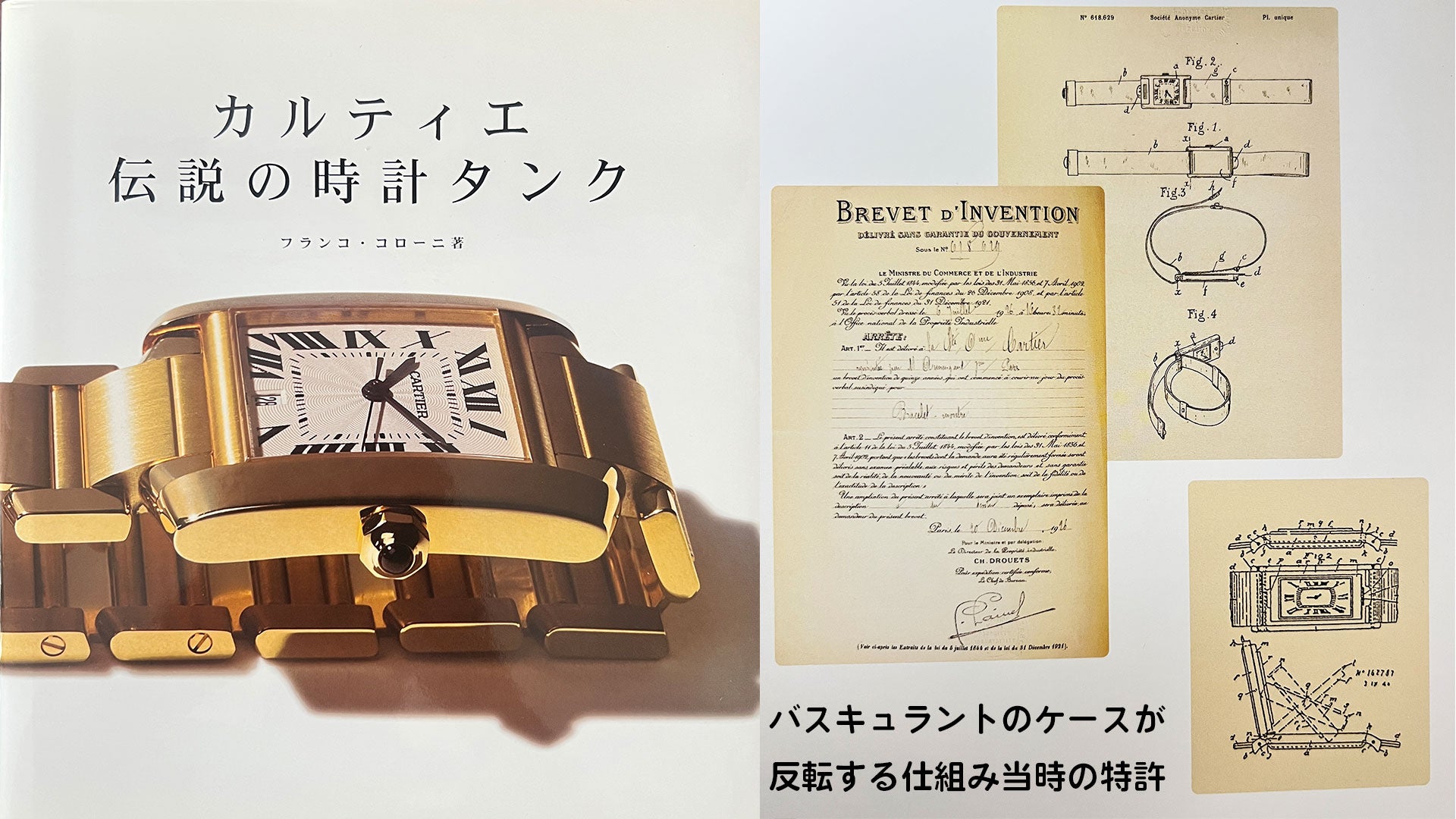
*The above content is a quote from Franco Coloni's book, Cartier's Legendary Watch, Tank.
Production of the Basculant continued until its reissue in 1999, but because it has such a complex mechanism, it could not have been easily manufactured and very few remain.
Before the reissue, the case of the model was made from 18K gold.
The birth of a special reissue model
To commemorate the 150th anniversary of Cartier's founding in 1997, a limited edition Basculant watch was released.
It features a ruby cabochon and guilloche engraving in the center of the dial, which distinguishes it from Cartier's standard sunburst-type guilloche dials.

This model is made with an 18K gold case and is limited to only 150 pieces, making it a rare model.
Then, C.P.P. Two of the models from the Collection Privée Cartier Paris have been reissued, retaining their traditional style but in modern sizes.
For more information about CPCP, please watch this video:
Now let's take a look at each watch.
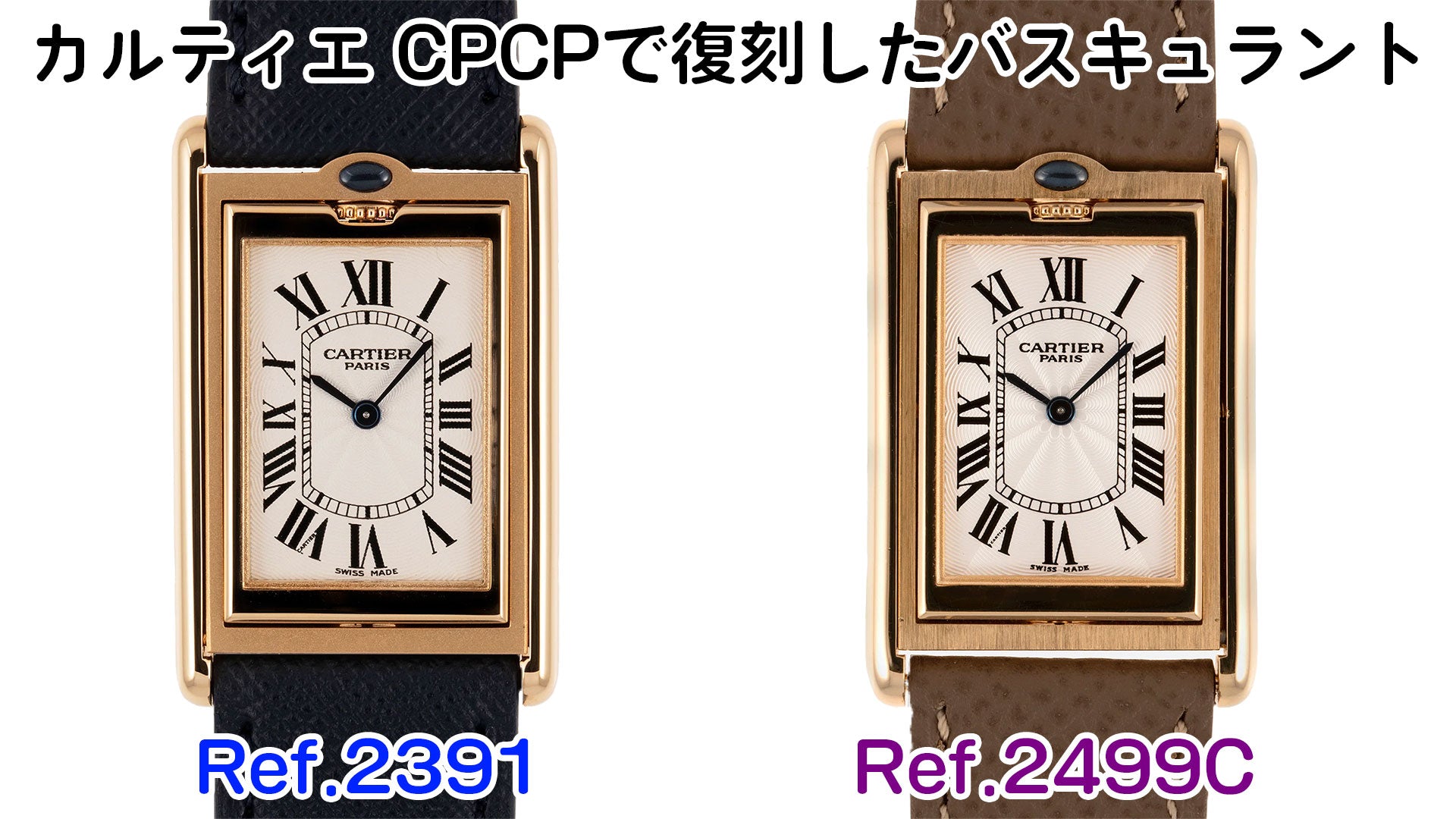
(Left) Ref. 2391, limited to 365 pieces (Right) Display case back Ref. 2499C
The reference 2391 is made of 18K yellow gold and was released in 1999 in a limited edition of 365 pieces.
The Ref. 2499C is also made of 18K yellow gold, was produced until the early 2000s, and has a skeleton case back.
It is CPCP so every case back is individually numbered.
So let's take a look at the differences between each one.
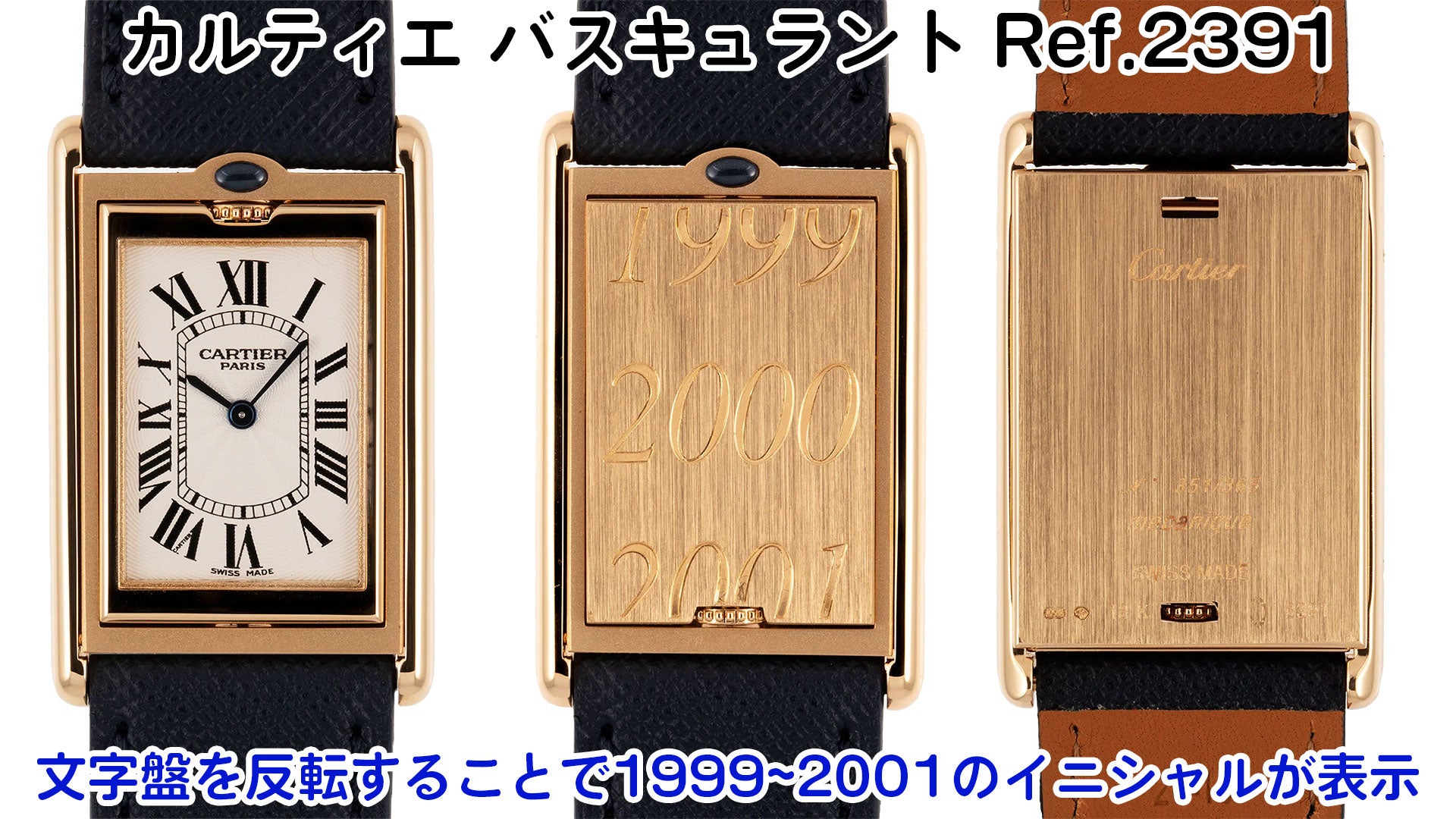

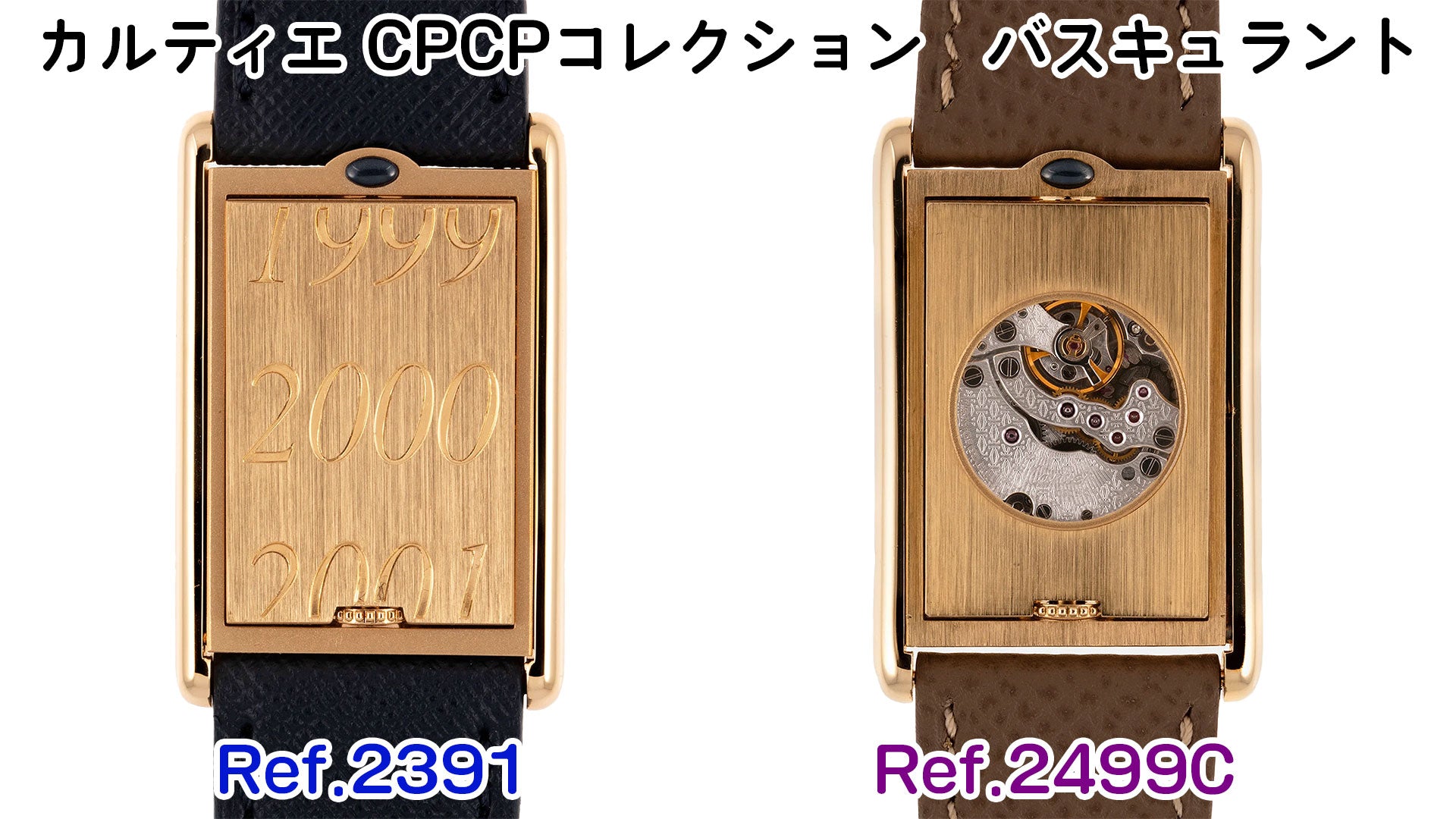
At first glance it is difficult to tell the difference, but the difference is that the back of the dial has the initials 1999, 2000, or 2001, or the movement is visible.
The Basculant has a rotating dial and a rotating outer frame.
The outer frame is the back side which has the Cartier engraving and individual number.
What these Basculantes released at CPCP have in common is that they are all similar in size, 38mm x 25mm x 5.8mm thick, and are equipped with the ultra-thin movement Cal. 610 made by Frédéric Piguet (Cal. 060 MC in the case of Cartier).
The movement is decorated with a continuous "double C" motif, and the base of the case has the same decoration, showing that it has been made with great care.
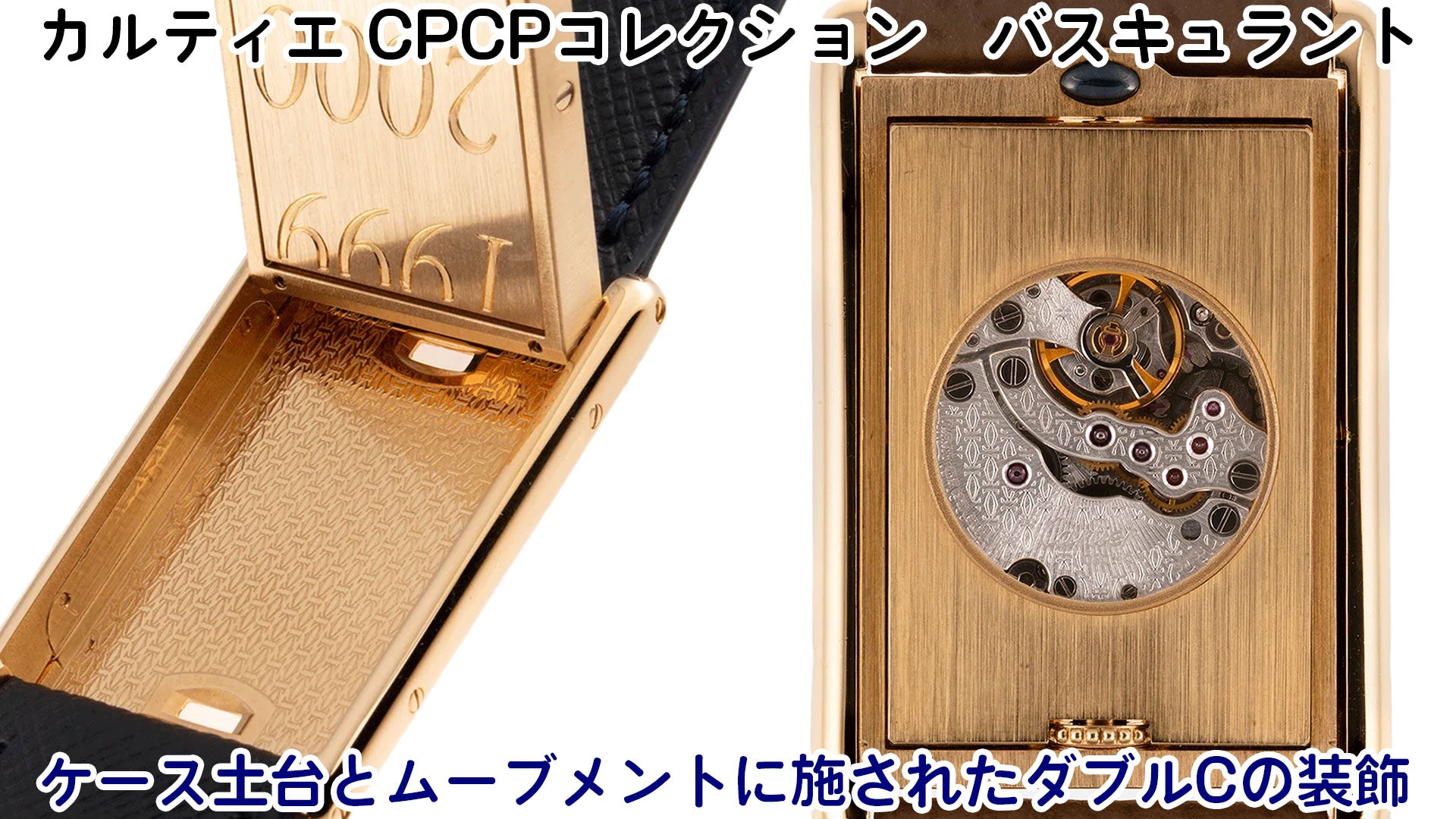
Both are incredibly cool watches, but from a man's perspective, the one with a visible movement is probably the winner.
In 1999, the product was launched as a main line using stainless steel materials.
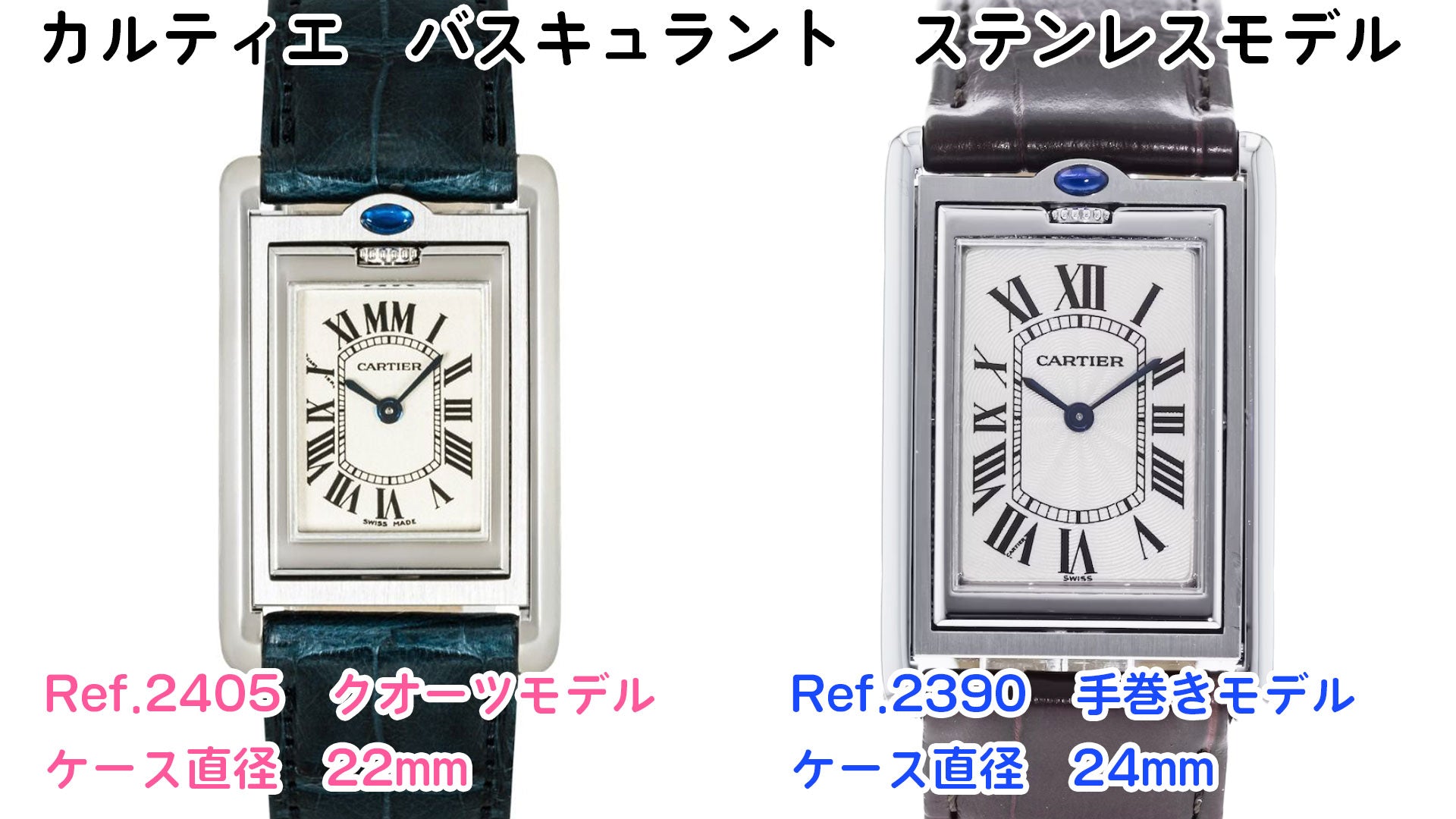
In 1999, Vasculant was added to the regular product lineup rather than just being a special collection, and at that time the materials were revised to make it all out of stainless steel so that everyone could afford it.
The movement is made by Frederic Piguet, just like the gold model released by CPCP.
While the CPCP only offered hand-wound movements, the stainless steel model was also available with a quartz movement, and was also available in ladies' sizes.
Vasculant was launched in 1999, but production of the main line stainless steel model ceased around 2006 and is now discontinued.
summary
This is a wonderful model that is mysterious with its mechanical movement and stylish appearance, typical of Cartier.
It can be used as a wristwatch, and when doing long hours of desk work, you can raise the dial and use it as a desk clock.
This kind of use is probably not common these days, but in this age of advanced digital technology, this Vasculant, which has a strong analog element, may satisfy the tastes of adult men.